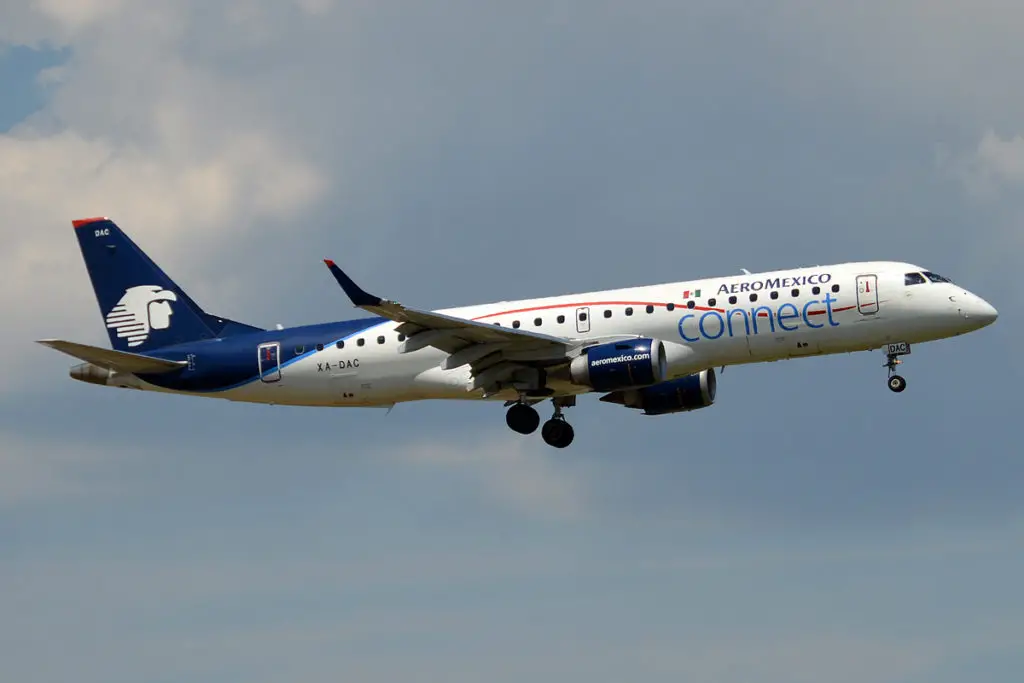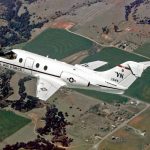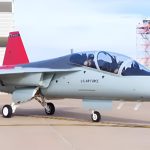Mexico’s aeronautical history began a new chapter this Monday, March 21, when at 6:49 AM local time an Embraer E190 with registration XA-ACJ, took off from Felipe Angeles International Airport (AIFA) and became the first commercial operation from the new airport serving the Mexican capital. The aircraft had arrived on Sunday afternoon.
Aeromexico flight AM890 departed for Villahermosa, capital of the state of Tabasco, located in the southeast of the country.
Seven other flights are scheduled to depart from AIFA on Monday:
- At 11:40 a.m., Volaris flight Y4 1010 bound for Tijuana.
- At 12:00, VivaAerobus flight VB 3281 to Guadalajara.
- At 12:00, Volaris flight Y45010 to Cancun.
- At 12:27 a.m. Volaris flight Y4 1012 to Cancun.
- At 12:30 VivaAerobus flight VB 4411 bound for Monterrey.
- At 14:53 Aeromexico flight AM874 to Merida.
- The last departure of the day will also be the first international one. Conviasa flight VO 3727 will depart to Caracas at 16:00.
Despega el primer vuelo comercial del Aeropuerto Internacional #FelipeÁngeles (#AIFA) con destino a Villahermosa, Tabasco 🥲. Es un avión de Aeroméxico ✈️https://t.co/6noDusl5OP pic.twitter.com/rdD82JGxyu
— XEVA TABASCO (@XEVATabasco) March 21, 2022
Regarding arrivals, the ones scheduled for this Monday March 21 are:
- Volaris flight Y4 1011 from Tijuana at 10:45 am.
- VivaAerobus flight VB 3280 from Guadalajara at 11:00.
- Volaris flight Y4 1013 from Cancun at 11:32.
- VivaAerobus flight VB 4410 from Monterrey at 12:00.
- Conviasa flight V0 3726 from Caracas, Venezuela at 13:00.
- Aeromexico flight AM891 from Villa Hermosa at 14:18.
- And the last flight of the day, Aeromexico flight AM875 from Merida at 19:17.
According to a press conference being held at AIFA this morning, today they expect to handle 2,021 passengers between arrivals and departures. In 2022 they would handle 2.4 million.
Felipe Angeles International Airport will have capacity for almost 120,000 air operations and 20 million passengers per year. Its terminal has 384,000 m2 of covered space with 27 concourses. The check-in sector has 100 conventional counters and 50 self-service counters, as well as 20 automatic baggage drop-off stations.
«This work was done in spite of groups with vested interests, and in spite of people who would like the country to do badly,» commented Mexican President Andrés Manuel Lopez Obrador during a press conference being held this morning from the airport terminal.
The AIFA was the controversial solution decided by Lopez Obrador’s government to attack the saturation of Mexico City’s International Airport, which implied canceling the construction of the new facilities in Texcoco even though they were already 50% advanced. It is located in Santa Lucia, sharing space with Military Air Base No. 1.















The cancelled airport (NAIM) was NOT nearly 50% built. Closer to 20% construction-wise. It was extremely delayed and over-budget like everything the previous PRI government started building — with incredible corruption of course, so they didn’t finish a single big project. Had that project it been continued, it would’ve devastated the federal budget and very seriously compromised the already very worrying environmental situation of Mexico City.
The only reason this has been «controversial» (mainly among corrupt elites and the aspirational people they manage to fool) is that corruption in Federal projects ended with the current Morena government. AIFA was built in within time (only 3 years) and budget (around $4B USD) by the army corps of engineers and even after paying for the cancellation there were savings of 33% for the public. No debt was issued, no concessions, it’s a national asset.
Cómo llegará? Que pena será un fracaso ????